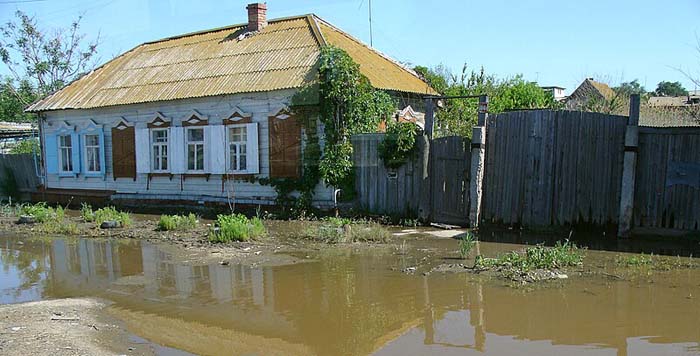
One of the most important things you can do for your house’s maintenance and stability is to redirect water away from the foundation. Several issues, such as soil erosion, foundation cracks, basement flooding, and mold growth, can result from water collecting around a building’s foundation.
Water Redirection: Importance
- Reducing structural damage and cracks
Foundation cracks due to water seepage can lower a home’s value and necessitate expensive repairs.
- Prevent mold and mildew
Mold and mildew, which thrive in damp environments, can affect indoor air quality and health.
- Flood prevention
When water collects in a crawl space or basement, it can cause flooding. This, in turn, can increase the levels of moisture and damage personal possessions.
- Foundation stability
The soil that supports the foundation can become unstable and shift if there is an excess of water.
Methods for Redirecting Water
In order to prevent mold growth, erosion, and foundation damage, it is essential to redirect water away from the structure. Here are a few top ways to accomplish this:
- Swales and Catch Basins
Create low-lying swales or areas to direct water towards catch basins or drainage areas. This method allows for reduced runoff.
- Downspouts and Gutters
Put gutters around your roof to collect water when it rains. Ensure that they are spotless and in good working order. To redirect water away from the house’s foundation, install downspouts that reach a minimum distance of five feet.
- Sealants and Waterproofing
Install waterproof membranes on the foundation’s exterior. Also, make sure to seal any joints or cracks in the concrete using sealants.
- Downspout Extensions
If you want to redirect water away from your foundation even further, you might want to think about installing downspout extensions. Rigid pipes, splash blocks, or flexible hoses are all viable options.
- Surface Drains
Catch basins or surface drains can collect water from your yard and send it to an outside location if you have a problem with water gathering there.
- Sump Pump
A sump pump is an essential tool for removing water from a crawl space or basement. Check that it is functioning properly, and think about adding a backup battery in case the power goes out.
- French Drains
This is a type of water redirection system that consists of a rock or gravel-filled ditch with a perforated pipe running through it. Put this in place around the outside of your foundation to control the flow of water and stop it from collecting.
- Landscaping and Planting
Plant drought-tolerant shrubs and plants far from the house’s base; they’ll need less water overall. Tree roots can cause problems with drainage and foundation damage, so it’s best to keep big trees away from houses.
- Appropriate Grading
You should have at least six inches of sloping dirt for every ten feet surrounding your foundation to prevent water seepage into your home. This will direct water away from your house’s base.
- Dry Wells
Dry wells, which are underground structures that collect and gradually distribute water into the soil, are ideal for locations where water naturally gathers.
Best practices you can use to redirect water
Here are some excellent practices to follow to redirect water:
- Lasting Solutions
Spend your money on long-term solutions, such as grading or French drains, instead of short-term repairs.
- Timely Fixes
To prevent more problems, fix any indications of drainage problems or water damage right away.
- Expert Evaluation
Consider getting a professional to check out the drainage and foundation if you have any doubts about how well the system you use to redirect water is working.
- Ongoing Maintenance
Monitor the drainage systems, downspouts, and gutters, and clean them as necessary.
Where does a foundation drain go?
In order to avoid water damage, a foundation drain system’s purpose is to control and redirect water away from a building’s foundation. Other names for this system include weeping tile, perimeter drain, French drain, and water management system. Its usual application is to reduce basement flooding, moisture, and water seepage. The usual placement of a foundation drain is as follows:
- Surface Discharge:
Where permitted, or in more rural locations, the drainage system may channel runoff into a wider open space for safe dispersal or soil absorption.
- Gravel and Filter Fabric
Crushed stone or gravel typically encircles the pipes. This has the dual purpose of facilitating the flow of water while simultaneously preventing the accumulation of debris and soil. To prevent silt from clogging the pipes, use filter fabric.
- An Infiltration Basin or Dry Well:
Some methods allow water to seep into the soil over time by redirecting it to a dry well. A larger-scale equivalent would be an infiltration basin.
- Drainage Outlet
The foundation drain directs the collected water to the appropriate exit, ensuring efficient drainage from the foundation area. You can use the following drainage outlets:
 Storm Sewers or Storm Drains:
Storm Sewers or Storm Drains:
Sometimes, municipalities channel the water into a storm sewer system or storm drain. These are parts of the stormwater management system in municipalities.
- Drainage System
Usually set up near the base of the foundation perimeter, the foundation drain runs the length of a building’s foundation. Perforated pipes collect water that seeps into the ground near the foundation.
- Sump Pit and Sump Pump
Sump pits are common in crawl spaces and basements. They also receive water from the foundation drain. Usually, we install a sump pump to remove the water from the sump pit and dispose of it in the building. Connect the pump to a discharge pipe.
How do I know if my foundation drain is clogged?
Whether you want to keep water out of your home and make sure it stays that way, you should check to see whether the foundation drain is plugged. If your foundation drain becomes clogged, you can see the following signs and follow these steps:
Expert evaluation
- A drainage professional or plumber can use instruments like drain cameras to examine the foundation drain. This enables a more precise diagnosis and facilitates remedies that are more tailored to the problem.
Musty or damp smells
- If you have a clogged foundation drain, water may pool there, leading to a musty smell in your crawl space or basement. This should raise red flags if there are other obvious areas of moisture.
Overflowing drain pipes
- If you can reach your drain pipes when it rains heavily, you can see that water is spilling from them. A clog could be the immediate cause of this overflow.
Mold or mildew growth
- If you find mold or mildew growing on your crawl space or basement surfaces, it could be a sign that water isn’t draining properly because of a blockage.
Issues with downspout and gutter shifts
- Your foundation drain could become clogged if your downspouts and gutters aren’t working properly. To prevent damage, keep them free and redirect water away from the home.
Inspect drainage outlets
- Check the foundation drain for water flow after or during rainstorms to see if there is an inspection port or outlet. There may be a clog if the flow is very low or nonexistent.
Foundation shifts or cracks
- Uneven settling, shifting, or cracks can occur in a foundation due to excessive moisture from a clogged drain.
Crawl space or basement water infiltration
- Following rainfall, a clogged drain could be the cause of puddles or water seepage in your crawl space or basement. If the water runs along the corners or walls, it’s a major cause for alarm.
To unclog a foundation drain, it may be necessary to call a professional for replacement, repair, or cleaning services. In order to save money and avoid costly repairs, it is best to deal with clogs as soon as possible.
Do all houses have foundation drains?
A house’s foundation drain is conditional on a number of factors. This includes adhering to local building codes, water table, location, house design, and soil type according to local building rules. Break it down this way:
Types of Home Design and Building
Foundation drains are typically not necessary for slab-on-grade homes. But they may be necessary for homes with crawl spaces or basements that flood. Similarly, houses in flood-prone or low-lying areas may not require them to the same extent as those on higher ground.
Older Homes
Foundation drains are not always standard in older homes, particularly those constructed during an era when water management was not a major issue. The addition or upgrading of foundation drains might be a component of a larger plan to deal with flooding or moisture issues in older properties.
New Construction
In areas prone to water problems, foundation drains are generally required by modern building codes. Check your local codes to see if you need drains while you’re constructing a new house or doing renovations.
Geography and Climate
Foundation drains may not be necessary in dry areas or in areas with soil that drains efficiently on its own. On the other hand, you’re more likely to see them in places where it rains often or where the soil is particularly porous.
Purpose of Foundation Drains
These drains, also known as perimeter drains or French drains, gather and redirect water away from the structure to prevent it from entering the foundation and causing damage. These are prevalent in places where there is an abundance of poor soil drainage, heavy rainfall, or groundwater levels.
Conclusion
Whether or not foundation drains are necessary is dependent on construction practices and the local climate. When purchasing a home or addressing water problems, it is best to seek advice from a structural engineer or local construction professional. Protect your home and your family’s health, and redirect water away from the foundation in an efficient manner.
